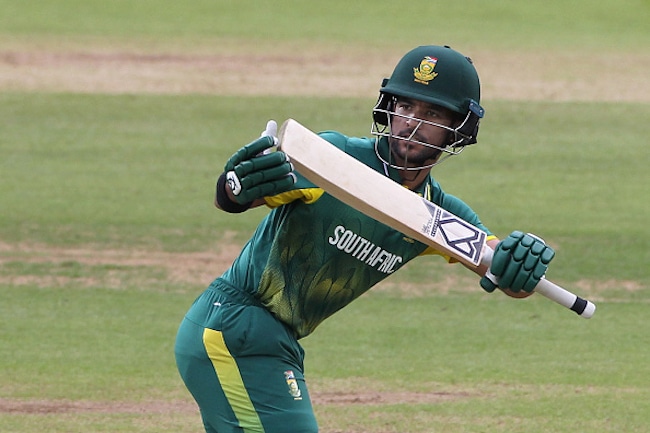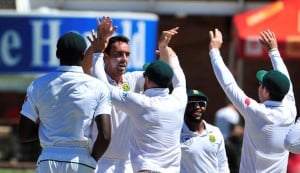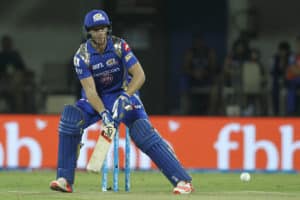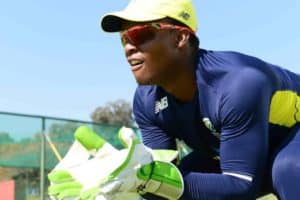The Proteas ticked all the right boxes in their final match before their Champions Trophy opener against Sri Lanka, writes GARY LEMKE.
In the process, the Proteas showed what a good side they are when they put it all together.
Victory over England in helpful bowling conditions at Lord’s is just what the doctor ordered after two defeats to the hosts in their three-match ODI series leading into the more important aspect that is the eight-team Champions Trophy.
Although England were fielding a mix-and-match XI after taking an unassailable 2-0 series lead – Ben Stokes, Moeen Ali and Chris Woakes, all injured, were left out of the side – South Africa did what they had to after AB de Villiers won his third successive coin toss.
Again, he put England in to bat, although this time there was little other option. The clouds were thick – light rain fell and the floodlights were on by 1pm local time – and it was already game over inside the first five overs as Kagiso Rabada and Wayne Parnell made merry on a seamer-friendly Lord’s pitch. England were 20 for 6 and, as a contest, things were done and dusted.
Credit though to the South Africans for turning up the intensity with the ball in hand and in the field, sharp catching complimenting high-class bowling, although the England top-order didn’t help themselves by playing their feet and throwing the bat at everything pitched up outside of the off-stump.
Lord’s is one of the best places to bowl at with the white ball, with its slope helping the bowlers to move the ball around late and, when the cloud cover is there and there’s a greenish tinge to the pitch, it reminds one of the Wanderers. It certainly suited the South African seamers, and Rabada, in particular, showed why he’s so highly rated.
With the job extremely well done, it’s now up the road to The Oval for Saturday’s match against Sri Lanka.
Somewhat surprisingly to this observer, De Villiers said afterwards that ‘we’re pretty sure of what our best XI is’, because to me it’s not as clear as he makes out.
Much of the preferred XI does select itself and in picking the side for Sunday, this is who I’d like to see: Quinton de Kock, Hashim Amla, Faf du Plessis, De Villiers, JP Duminy, David Miller, Chris Morris, Wayne Parnell, Andile Phehlukwayo, Kagiso Rabada and Imran Tahir.
In making 55 and becoming the fastest man to 7,000 ODI runs in the seven-wicket triumph at Lord’s, Amla has found his form at the right time and we all know that the Proteas have one of the best batting line-ups in the game today. De Kock, with a 98 in the second ODI, is always going to be a threat, Du Plessis’ and De Villiers’ records speak for themselves, so there’s runs galore in that top order.
Duminy deserves his place, despite some growing criticism, and he provides an extra option as the fifth bowler. Parnell was impressive at Lord’s and his left-arm action is a bonus, while Tahir has to return to the side – he’ll apply both the brakes and pick up wickets, particularly when he’s bowling to right-handers, as left-handers seem to be able to play him a little easier.
Phehlukwayo might be considered fortunate in my XI ahead of Morne Morkel, but I like the look of the 21-year-old Dolphins all-rounder.
He’s only played 16 ODIs and his seamers have gone for around a run a ball up to this stage, but there’s quite a bit of Lance Klusener about him. He is physically strong, a right-handed bowler, and a left-handed batsman who has the ability to clear the rope with considerable ease.
In the second ODI he was given the last over to bowl and for me that was the wrong call by De Villiers, and ultimately it was England’s death bowling that proved decisive in that match. Death bowling for the Proteas has been a problem for a number of seasons now and if there’s a weakness to this side, that’s it.
Morris could be the man to bowl the 48th and 50th overs, bowling the yorker at pace and mixing it up with good use of the slow bouncer.
It’s always good to have a selection headache, because that means the competition is good, but, as we have consistently said, it’s all about getting the balance of the side right, and for De Villiers to make the right on-field calls.
Photo: Sarah Ansell/Getty Images





